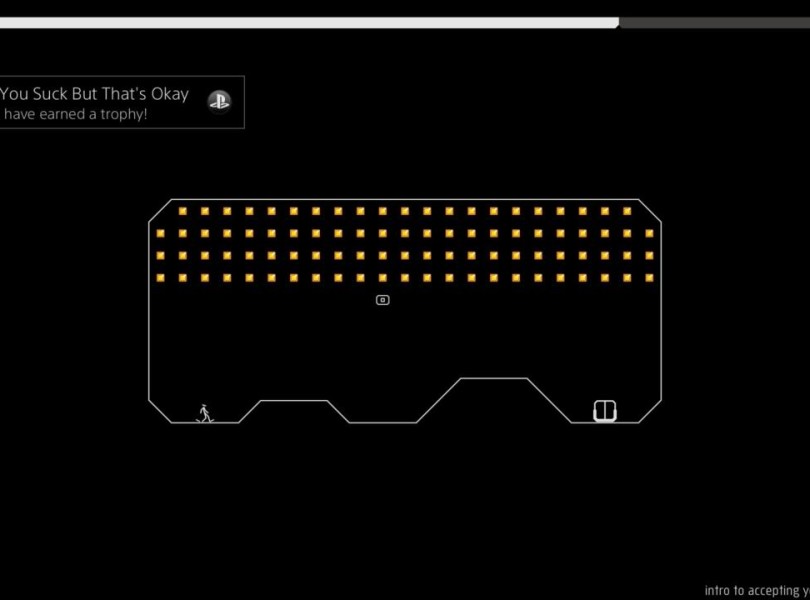Newcomers to the N series will get a brief, funny little primer from the main menu of N++ explaining the main premise. You’re a ninja, and the goal is to escape a neverending series of deadly traps, with naught but a floaty jump button at your disposal, while making off with all the gold you can. It sounds like a hectic, crazy mission, especially considering that the stages come at you with everything they’ve got, including lasers, missiles, lightning, and drones of all shapes, sizes, and intelligence. Your only real weapon is the sheer force of momentum itself. But the secret to success in N++ isn’t to hyperventilate and sharpen your twitch reflexes but to find your zen, that place of unshakable equilibrium, of comfort with the controls, the knowledge of how the world will react to your every move and how you will respond in kind.

It’s the same sense of zen that most people can associate with going on a long drive, a contextual, situational awareness of the vehicle you’re in, what it’s capable of doing and not doing, the road ahead, and the other vehicles around you. It’s the point where you’re no longer fighting the rules of the world around you but flourishing within it. There’s an ebb and flow to every stage, a rhythm to every trap, every projectile, every time your tiny stick-figure ninja jumps through the air. Your average platformer presents an obstacle at each turn, expecting a specific utilization of the tools at your disposal to surmount. In N++, it’s more akin to the game teaching you to do a kinetic dance each and every time.
That isn’t to say that N, now in its third iteration, has become any less of a challenge. It’s still a game that’s definitely not going to coddle you on your neverending journey to the holy doorway out of each stage, and the portions have never been more daunting, with 100+ puzzles built right into the game and an infinite sprawl of new stages available through the level editor–some built for pure evil and others as a showcase of pure Rube Goldberg genius. However, the learning curve has a much more gentle gradation this time around. The game’s background, once a grayscale matrix pattern, can now be shifted into a number of contrasts and colors. Most are just cool, though a couple (like a certain pink one) are weirdly nauseating.

Even the music, once a pulsing, pounding, insistent heartbeat, is now mostly a mix of chilled trance and tense, moody trip-hop. It’s a game that’s inviting you to the peace at its center instead of taunting you to come get it. The first trophy you ever get is the game’s ethos in a nutshell: “You Suck, but That’s Okay.”
Veterans know this, and there isn’t much here to surprise anyone who’s been through the wringer with N+. But the game doesn’t have to surprise you. Instead, N++ is more of a refinement for a series that’s always felt like an ongoing statement of purpose more than a full game, despite the sheer number of puzzles pre-loaded. The game still feels a little on the slight side. Aside from high scores and the mere satisfaction, there’s not really an impetus for the average player to go chasing after the harder bits of gold scattered throughout the stage, especially when much of the same satisfaction can be had just from reaching the goal to begin with. Instead, it remains just as it has been, a strange sort of gaming meditation, sharpening skills that definitely have applications elsewhere in one’s gaming life. Try playing this for a half hour and then try beating the harder obstacle course stages in Rayman Legends. The same principles work like magic.

Still, the purity of N++ is still its greatest appeal, a stripped-down representation of the skills that many gamers have come to know as innate, given free reign in some of the best level design ideas in the industry. N++ may represent an “if it ain’t broke, don’t fix it” sort of expansion, but the exhilaration that it continues to offer speaks to the idea that it may have been perfect to begin with.


